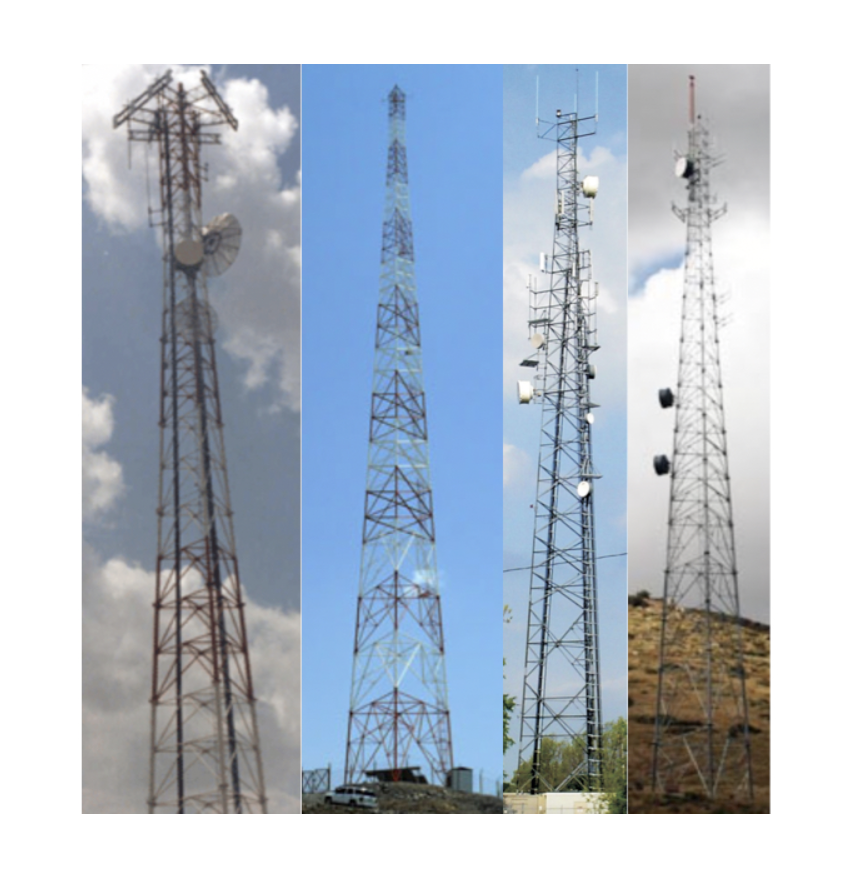Tower Sections

The telecommunication and wireless communication industries use towers, poles and mounts as support structures for antennas, personal communication systems, commercial and amateur broadcasting, home television and cellular telephones. There are two basic types of towers: self-supporting and guyed. Self-supporting towers can be three- or four-sided steel-lattice pyramids or boxes or tubular monopoles. Guyed towers are a slender, steel structure supported by one or more levels of braided and stranded high-strength steel guy cables that anchor it to the ground. When selecting the proper tower type, it is important to consider how much land it will occupy, the soil type of the land and the overall height and weight of the finished installation.
Tower sections are individual components that make up a tower structure. Joining tower sections together form a complete tower of a specific height and weight capacity. Tower sections can come in different shapes, sizes, and materials depending on the type of tower and its intended use.
More Information about Tower Sections
Self-Supporting Towers
Sturdiness is essential to ensure that a self-supporting tower can withstand wind loads and maintain its structural integrity. This type of tower typically comes in different sections with each section having a designated height and weight. The tower sections are joined together using bolts inside the sections, and installing these bolts is an important aspect of tower fabrication.
Guyed Towers
For guyed towers, the tower height and the number of guy wires required to support the tower are important factors to consider. The tower legs are typically tapered, and the tower sections are designed to ensure dependability and standard compliance. In some cases, customers may request specific tower designs, and tower manufacturers may offer different tower models to meet the customer's requirements.
Universal Towers
Universal towers are self-supporting towers that are designed to accommodate a range of antennas and other broadcasting equipment. The tower sections are constructed to provide the necessary support for these equipment, and the joining of tower sections is critical to ensure that the tower can withstand the weight of the equipment.
Tower Grounding
It is important to ensure that when grounding any type of tower structure, the grounding electrode conductors be sized properly so that they can handle any potential load that the tower may encounter. If the tower is constructed of any type of metallic material, it is required by the National Electric Code (NEC) that the tower be incorporated into the grounding electrode system and be bonded to any auxiliary or supplementary grounding infrastructure. This bonding would need to occur, so that the tower’s grounding electrode conductors tie into the main sight ground or directly into Earth ground, depending on the situation.
When installing the grounding conductors for any type of tower, it is important to ensure that the conductor be run as straight as possible, avoiding any bending in the material. This can help reduce the amount of impedance in the conductor. If bending is necessary in the grounding electro conductor, a minimum bend radius of at least eight inches should always be maintained. It is also recommended that any conductors that are being used are multi stranded, individually tinned, copper conductors.
Wherever possible these grounding conductors should be installed in one continuous length in order to reduce the overall impedance of that conductor.
Splices should be avoided whenever possible. If joints or splicing are necessary, special welding techniques should be used in order to properly fuse the two different conductors together. It is always recommended that where the grounding electro conductor meets the metallic tower structure, the same special welding technique should be used. This welding technique is referred to as exothermic welding.
The best system to use for grounding a tower is to install a ground ring. A ground ring is a system of conductive grounding materials that encircle the tower. It is important that the main grounding conductor be no smaller than two gauge, bare copper wire and that this conductor is at least two and a half feet below the soil surface and have direct soil contact. Grounding rods and plates should also be used with the grounding ring and should be bonded every ten to fifteen feet, depending on the situation. A minimum of one grounding electrode conductor should be connected back to the tower itself.

